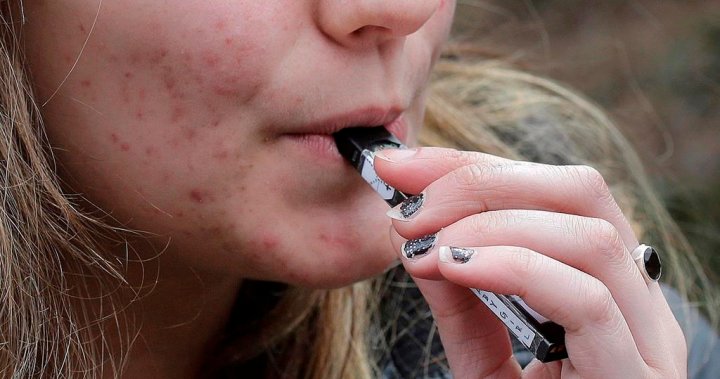A recent study published in the Tobacco Control journal has found that e-cigarette products, or vapes, may contain toxic metals such as lead, uranium, and cadmium that can be particularly harmful to children and teens. The study warns that ingesting these metals can cause systemic harm to young people, leading to cognitive impairment, behavioural disturbances, respiratory complications, cancer, and cardiovascular diseases. Exposure to lead has been linked to significant effects on cardiovascular and neurocognitive functions, while cadmium exposure is associated with an increased risk of osteoporosis and various cancers.
The findings come at a time when vaping has become increasingly popular among young people worldwide, as rates of smoking tobacco have been declining but vape use has been on the rise. In Canada, approximately one in seven youth aged 15 to 19 reported vaping in the past month in 2022, with one in 15 reporting daily use. A significant number of young people reported trying vaping for the first time, with nearly half of young adults aged 20 to 24 having tried it in their lifetime.
The study analyzed urine samples from 200 teens aged 13 to 17 in the United States, with varying levels of vape use. It found that greater frequency of vape use was associated with higher levels of lead and uranium in urine, with users of sweet flavours having higher levels of uranium than those who opted for mint or menthol flavours. While previous research has also found a link between e-cigarette consumption and toxic metals, the study notes that the specific findings can vary by brand and type of vaporizer used.
In response to the rising popularity of vaping among young people, the Canadian government has taken steps to regulate the industry. In 2021, the federal government announced plans to ban most vape flavours and reformulate existing flavours with approved ingredients. While these regulations have not yet been implemented, several provinces and territories have already banned flavoured vapes. Ontario recently announced a ban on vaping devices in schools, along with other substances, and plans to invest $30 million in security upgrades to protect students.
Dr. Kieran Moore, Ontario’s chief medical officer of health, emphasized the importance of protecting students from preventable threats like vaping. Canada’s mental health and addictions minister, Ya’ara Saks, supports Ontario’s measures and the federal government’s efforts to restrict vape-related advertising and limit flavoured vapes, nicotine content, and online availability. Saks emphasized the government’s commitment to protecting young Canadians from the potential harm of vaping products.
In conclusion, the study’s findings highlight the potential risks of vaping, especially for young people who may be more susceptible to the harmful effects of toxic metals found in e-cigarette products. As vaping continues to gain popularity among youth, it is crucial for governments and health authorities to implement regulations that protect young Canadians from the potential health risks associated with vaping. Further research and public awareness campaigns may also be needed to educate youth about the dangers of vaping and promote healthier alternatives.


